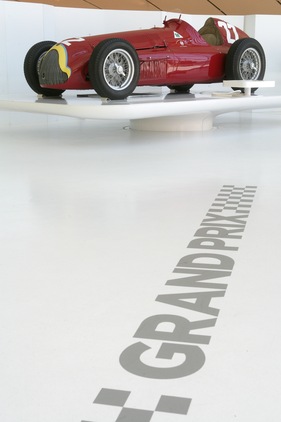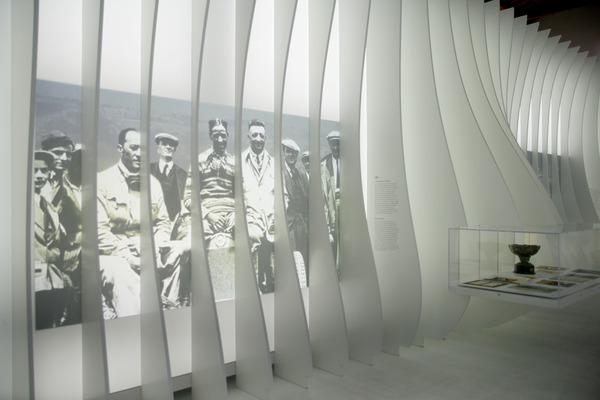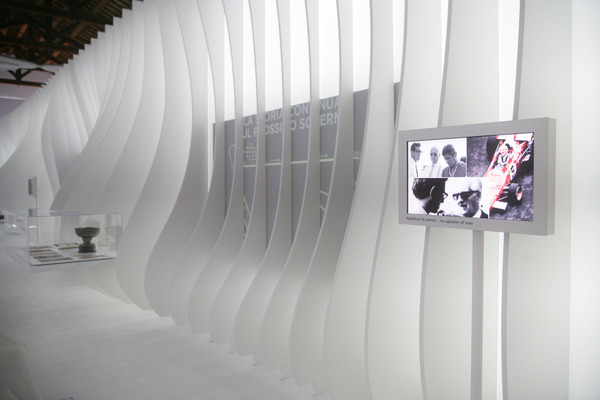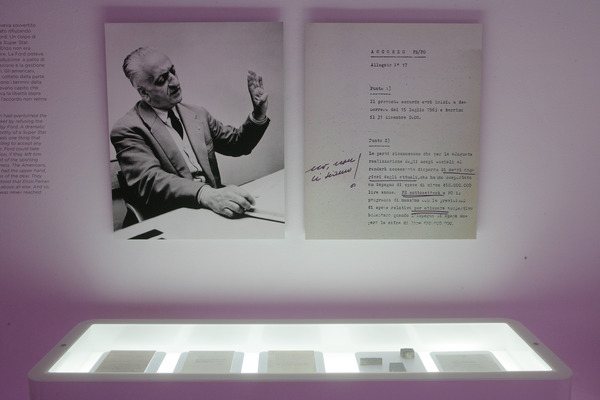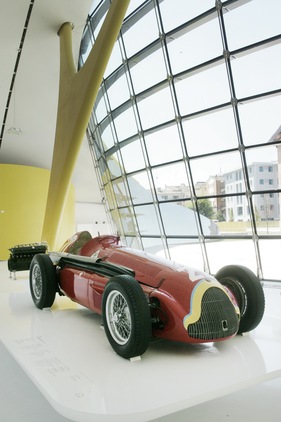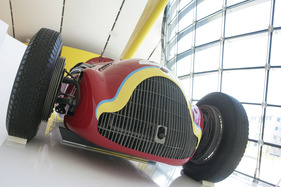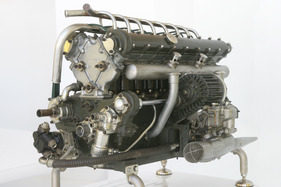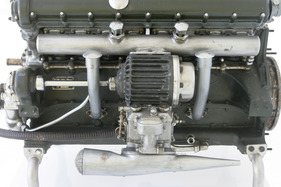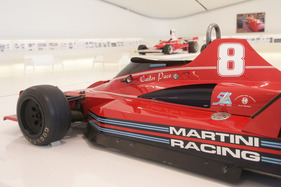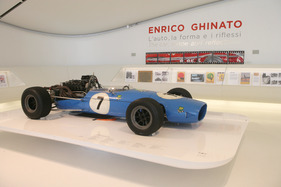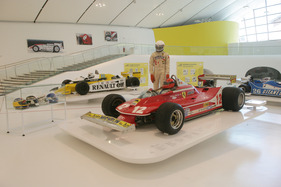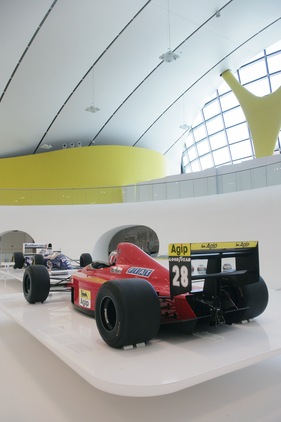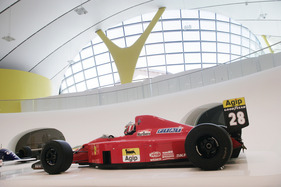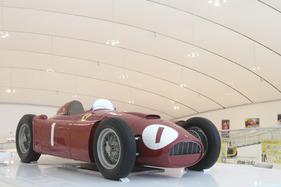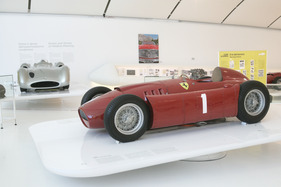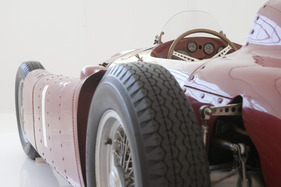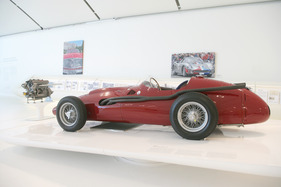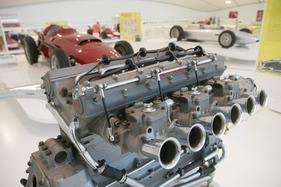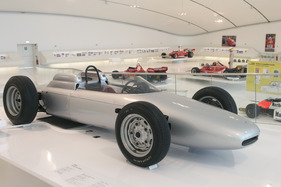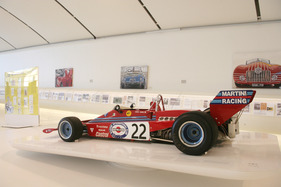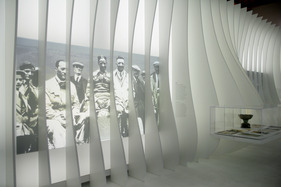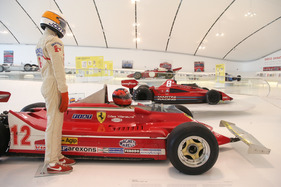For a long time, Ferrari was not a big fan of "heritage protection" and nostalgia. Until the late 1990s, the company showed very little interest in its own history. However, private collectors were found all over the world, some of them with incredible Ferrari collections.

No sense of history at Enzo
Only Ferrari itself was never able to properly display its company history in a museum. Virtually all the cars were sold or even scrapped at the time. Not even one of the racing cars was ever put to one side. The previous year's cars were often further developed, converted and reused.
As a result, some rarities are still completely missing today. A prime example of this is the 6-cylinder F1 156 used in 1961, better known under the name "Shark Nose". We know that all of these 1.5 liter cars have disappeared and only two replicas exist again today. Chris Rea had one car built for his film "La Passione" and another was built in England(we reported on this).
In the building where Enzo Ferrari was born
When enthusiasm for Ferrari grew almost immeasurably in the 1990s with Michael Schumacher's help, a museum was finally needed.
The Galleria Ferrari in Maranello was Ferrari's first in-house museum. It was mostly moderately filled with exhibits from private collections.
In the meantime, Italy was learning from its German counterparts/competitors Porsche, BMW, Audi/Horch and Mercedes, and Enzo Ferrari's birthplace in Modena was renovated.

The Commendatore's entire former office, as well as personal items such as sunglasses, fountain pens and agendas belonging to the great master, are now on display in showcases, while large screens in a futuristic design show historical films of his work and successes.
Modern museum building
A prime example of modern architecture has been realized next to the historic building. From a bird's eye view, you can see a huge yellow hood with the distinctive cooling slots lying on the ground. The new "Museo Casa Enzo Ferrari" is hidden under this hood at Via Paolo Ferrari 85.
This building is as innovative as the cars in the exhibition once were. The double-curved aluminum roof is 3000m2 in size and looks like a three-dimensional sculpture.
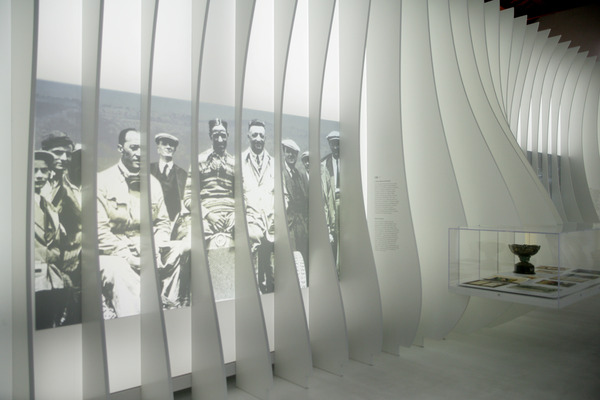
The British architecture firm "Future System" under the direction of Jan Kaplicky with Andrea Morgante is responsible for the imposing building.
No Ferrari in the Ferrari Museum?
The architecture alone is impressive, but the contents are even more so. You expect to see Ferrari vehicles, but at the entrance you are surprised by an Alfetta and the next vehicle is the streamlined Mercedes W196 from 1955.
A Ferrari museum without a Ferrari? The explanation will soon be given. There will not be a permanent Ferrari exhibition, as everyone might expect, but there will be temporary exhibitions.
At the moment, Grand Prix racing cars from 1938-1994 are on display. So the mystery of the 1938 Alfa Romeo 158 receptionist has been solved. The ingenious car from the Alfa Museum appears like a sculpture in the modern gallery. The Mercedes Benz W196, as well as the Maserati 250F, the Lancia Ferrari D50 and the Porsche 804 look like superlative works of art in the white, organic surroundings.
Almost all of the cars on display are familiar, but in this modern setting, the perception of form is completely different again.

A special Tecno and a unique Cooper
The Tecno Goral E731 is a very interesting one-off. The small company Tecno built two different cars for the 73 season. The faster of the two was the car for McCall. Gordon Fowell's E731, which was completely unsuccessful, was only used in one or two Grand Prix races. This car then found its way to the headquarters of Martini Racing in Paris, where it decorated the reception hall for years.
Another lesser-known car is the Cooper-Maserati T81 from 1967. This last factory car from 1966 with chassis number 9005 was sold to Scuderia Filipinetti. 9005 was given chassis number 4/66 and the V12 engine of a predecessor in order to meet the customs regulations of the previous owner Guy Ligier, which were entered in the carnet.
Ferrari monoposti after all
But then there are the red Ferraris: Jody Scheckter's world champion car, the 312 T3 from 1979, Niki Lauda's 312T from 1975, Regazzoni's 312 and Berger's "duckbill", John Barnard's F1-89.
They are joined by two cars driven by the unforgettable Brazilian Ayrton Senna. The McLaren-Honda MP4-4 from 1988 and the Williams FW15D 1994 - two extremely historic cars.
McLaren won all the races of the season with the MP4-4, apart from one, the Italian GP in Monza. This race had also been won for a long time when Senna was shot down by Schlesser while lapping, handing victory to Gerhard Berger's Ferrari. The Williams ended the great career of the popular Brazilian on May 1, 1994.
As Formula 1 celebrates a reunion with the Turbomuseum next year, the first turbocharged Grand Prix winning car should not be missing: Jean-Pierre Jabouille's Renault RS10 from 1979.
Two Alfa-Romeo F1s from the near-new era
Two Alfa Romeos also found their way from Milan to Modena for Autodelta's 60th anniversary. The 1983 183T by Andrea de Cesaris and Carlos Pace's Brabham-Alfa Romeo BT45 from 1976.
A worthwhile visit
A stop in Modena on the way to Tuscany or the Adriatic will probably be worthwhile more often in the future.
And even if you don't have a great deal of prior knowledge, you can still be surprised by the respective exhibition at the "Museo Casa Enzo Ferrari".
And if you still want to prepare yourself, please refer to the museum's website .

